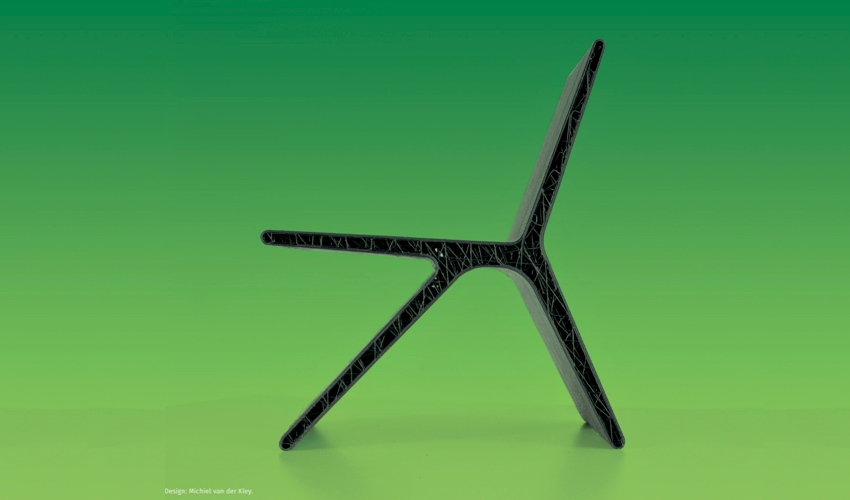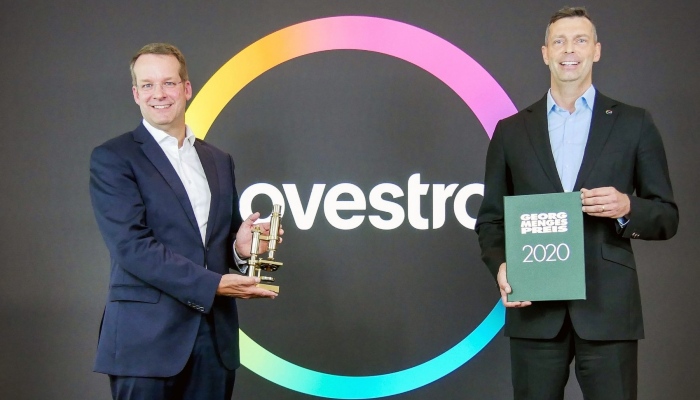Covestro Launches New Recycled PET 3D Printing Material

Covestro has launched a new 3D printing material, Arnite® AM2001 GF (G) rPETm, made from recycled post-consumer PET waste. This is the materials manufacturer’s first additive manufacturing specific product. The material is a glass-fiber filled recycled polyethylene terephthalate (rPET) for 3D pellet printing. Evidently, the new product perfectly fits Covestro’s vision for a Circular Economy. Together with the recently acquired DSM Resins & Functional Materials, Covestro illustrate their synergetic approach to adding more value to additive manufacturing and industrial production overall.
Covestro’s new glass-fiber filled pellet material will allow manufacturers to produce parts with increased structural performance, while still resulting in a significantly lower carbon footprint than virgin material. This in turn means that manufacturers will be able to make their supply chain more circular without having to make any compromises when it comes to performance. Hugo Da Silva, Head of Additive Manufacturing (former-DSM) commented: “The introduction of this high-performing material for 3D pellet printing is an important step in creating circular supply chains. With PET packaging accounting for more than 50 percent of total plastic waste, extending its lifetime by re-using it as feedstock offers a broadly available alternative to virgin raw materials – without the need to compromise on performance or total cost of ownership.”

Prof. Christian Hopmann (left), Head of the Institute of Plastics Processing at RWTH Aachen University, presented Markus Steilemann with the Georg Menges Prize.
Arnite® AM2001 GF (G) rPET will not only increase sustainability but also reduce costs. Covestro has optimized the recycled PET for 3D pellet printing using technology also known as fused granulate fabrication (FGF). This technology allows for both fast and economically viable additive manufacturing of large-size parts. Thanks to direct printing of applications reducing product development time, costs are lowered. Moreover additive manufacturing enables design flexibility and therefore also reduces material cost, using only the material necessary. 3D printing thus is also a far more sustainable alternative to traditional manufacturing methods. Therefore, by catering the new material to additive manufacturing Covestro is pushing manufacturers to shirt toward a Circular Economy.
Covestro’s Arnite® AM2001 GF (G) rPET also has impressive mechanical properties as well as a broad processing window which makes it ideally suited for structural applications across a variety of industries. These include pedestrian bridges, tiles for cyclist or pedestrian tunnels, architectural applications like cladding or partition walls, in- and outdoor furniture, small boats, packaging crates or tooling. According to Patrick Rosso, Head of Additive Manufacturing at Covestro, “This material is the best proof point we could want to underpin the two teams’ joint ambition to bring the market a stronger materials partner that can help accelerate industrial additive manufacturing.”
If you want to find out more information you can read the full press release HERE. What do you think about Covestro’s new material for additive manufacturing? Let us know in a comment below or on our Facebook, Twitter and LinkedIn pages! Sign up for our free weekly Newsletter here, the latest 3D printing news straight to your inbox!






